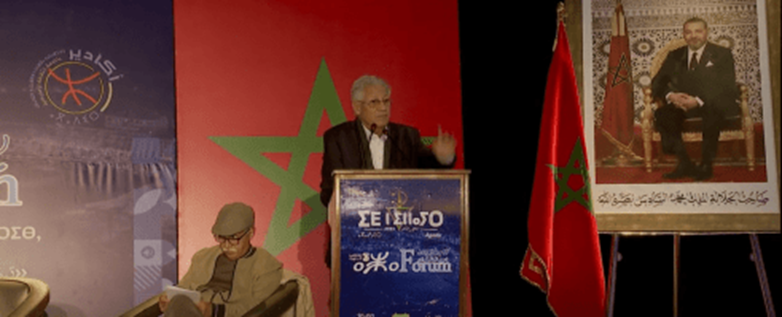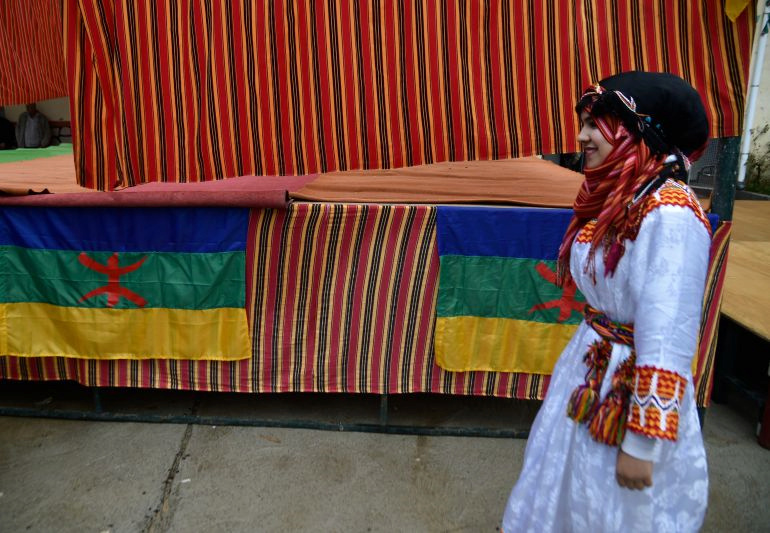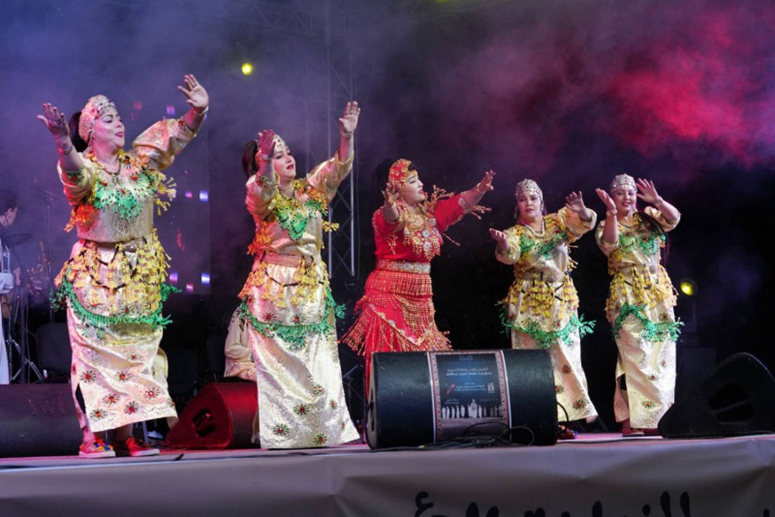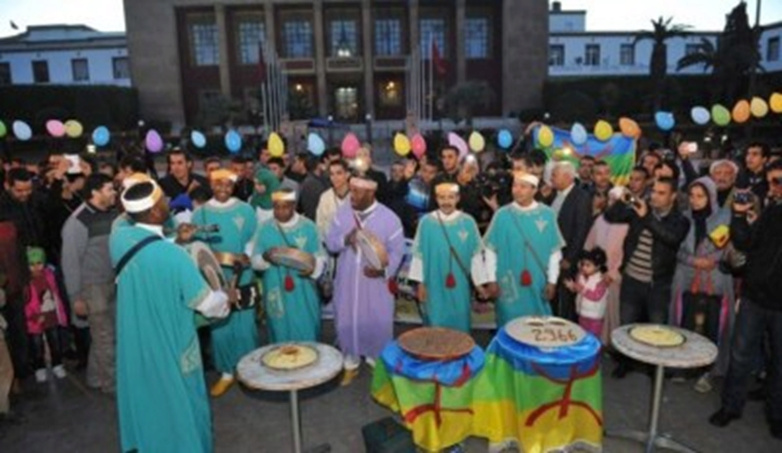Dr. Al-Shami writes: The Amazigh calendar and the considerations calling for its demarcation

Let history record this official celebratory moment for the Amazigh calendar, which was added to the Hijri and Gregorian calendar, as our ancestors used to celebrate it with all spontaneity and spontaneity since ancient times, but today’s celebration is a historical event that has returned to the flavor of the legitimate and legal national holiday. In the past, celebrating was like getting high on the forbidden. Today, we have the right to celebrate with our heads held high and in full view of the people and the world. Congratulations to all of us, and congratulations to all Moroccans, for this new gain, for which all credit and credit goes to the royal decision demarcating the Amazigh calendar, or rather, the National Day, “Haq Ouskas,” a designated official national holiday, similar to the first of Muharram in the Hijri year and the New Year.
Brothers, this royal decision is a political position from the highest authority in the state, and it is a decision issued by the Royal Court in a written statement (May 3, 2023) based on important considerations and reasons, expressed in this statement as follows: “...as it (i.e. the Amazigh language) is a major component “The Moroccan identity is rich in its tributaries and a common asset for all Maghreb people without exception.” So words; “The main or the main,” “the balance,” “the joint,” and “the tributaries” - by virtue of their repetition and recurrence in royal speeches, the constitution, and the regulatory laws explaining it - are not ordinary linguistic vocabulary, but rather have become terms and concepts that require consideration:
The first of these terms is the word “principal” or “main”: which was given to the Amazigh language only to the other components. This is due to the fundamental pivotal role played by the Amazigh language, as it is the melting pot in which all the African, Andalusian and Mediterranean elements and components that enriched the authentic Moroccan identity, in the words of the statement itself, were described as tributaries that flow into the river.
The second reason on which the decision in the Royal Court’s statement was based is that the Amazigh language is considered a common asset for all Moroccans without exception. Why did the statement use the words “balance” and “subscriber?” Scholars did not stop long to analyze the deep meaning and major connotations indicated by these simple words that have become conceptual terms, as we said previously. What is meant by the word “balance” linguistically is capital. Iqrādīn means currency and property, “Aida” or “Akra” in Amazigh, even if this capital is intangible wealth of values and cultural heritage that was formed, collected, and passed from generation to generation until it reached the point of official recognition. As for the word “common,” it is another concept in which Morocco is unique from the rest of the countries of the world, which is the national dimension that was given to the Amazigh language, a dimension that was not given to ethnicities and nationalities in Western countries because of their regional character, limited access and spread to the same countries to which they belong. This is the case with Basque and Catalan in Spain, as well as Walloon and Flemish in Belgium, and other nationalities of other countries that are prisoners of the geographical regions to which they belong.
The third rationale adopted in the decision regarding the Amazigh calendar is the Moroccan Constitution, which is the highest law that binds everyone, especially the fifth paragraph of Chapter Five, which recognizes “the state’s protection and preservation of” the various cultural expressions used in Morocco. Accordingly, the regulatory laws recommended the establishment of higher institutes concerned with “By protecting, preserving and developing diverse cultural heritages, including the agricultural cultural heritage and its ancient ceremonial rituals. The royal decision, in keeping with the constitution, adds a cultural-identity holiday to the list of national and religious holidays. Note that such cultural holidays are considered national holidays in some Islamic countries, making them on top of national and religious holidays, such as Nowruz (New Day), which is an official holiday in Iran, Turkey, Afghanistan, the Caucasus countries, and other countries. The Arabs took it as a holiday in the past throughout the Levant and Iraq and under the Islamic Caliphate, especially the Abbasid Empire, despite its historical association with pagan myths and practices. Poets like Al-Buhturi sang about it, saying:

The free spring has come to you, strutting around laughing ** So beautiful that they almost spoke
, and Nowruz has alerted in the twilight of darkness ** The beginnings of the rose Be yesterday’s sleep
Approving it in Morocco as a cultural holiday - which was yesterday a national demand - undoubtedly strengthens the bonds of the Moroccan people, if not the Maghreb peoples. This holiday, which is essentially linked to the land, its resources, and the environment in general, which is a current concern, deserves to be proposed as a world cultural heritage by the United Nations (UNESCO), similar to Nowruz and other cultural holidays that the United Nations has included in its representative lists of world heritage.
Time calendar
Finally, the state’s recognition of the Amazigh calendar, including the calendar for the year 2974, which starts from 950 BC, especially since this calendar sparked widespread controversy and is still ongoing, especially among the Maghreb countries, as each country tries to belong to it alone, knowing that the affiliation should be to Tamazgha. The entire Berber community from the ocean to Siwa, especially since this calendar belongs to ancient times in which there are no contemporary national borders.
In addition to the fact that the calendar is linked to a great historical event, it is considered a contribution to one of the largest civilizations of the ancient Middle East, namely the Pharaonic civilization. Peoples often date themselves based on great events, and the great historical event that the Amazighs accepted as their calendar was their contribution to the Pharaonic civilization, their accession to the Pharaonic throne, and their founding of the Twenty-Second Dynasty in the year 950 BC.
It should be noted that ⵛⵉⵛⵓⵏⴳ Sheshong took over the kingship in a very peaceful and natural way and no one objected to that, given his closeness to the Pharaonic royal court and his relationship to King Psusnnes II, the last king of the Twenty-First Dynasty. It seems that he himself, King Sousans II, paved the way for him to ascend the throne. In addition to the military and religious status he enjoyed in the state. Therefore, the Berbers did not enter Egypt by force, nor did they defeat Ramesses nor the last king of the Twenty-First Dynasty, as some claim. They did not enter Egypt as invaders or occupiers, but rather they settled in the Nile Delta as farmers and warriors in the Pharaonic armies, and they assimilated into the Pharaonic civilization, which is from them and to them because they are of one lineage. This is confirmed by the intermingling of the Libo, Meshwash, Tamhou, and other tribes in western Libya with their Berber brothers in Egypt, such as the Isiwan tribes known as Siwa in western Egypt, which still speak the Zenatian Berber language to this day. Shishon himself was born from an Amazigh family that lived in Siwa, west of Egypt, and he was born in Ihnasia, which is called in the Pharaonic name Ninsou, which is currently Fayoum Governorate (northern Upper Egypt). The Amazigh and the Amazigh are therefore an authentic Egyptian component with an extension in North Africa, and both the Amazigh and the Pharaohs are of the same lineage. The claim that the Amazighs defeated the Egyptians and enslaved them is baseless, and therefore the Amazighs cannot take the war or occupation as their holiday.

When we say that the Pharaohs and Berbers are of one lineage because they are Hamitic, they are related to Ham, the son of Noah, peace be upon him, and the Hamitic linguistic family includes North Africa, Pharaonic Egypt, and the Horn of Africa. As for the Semitic family, it belongs to Shem, son of Noah, peace be upon him, and includes Aramaic, Canaanite, Arabic, Hebrew, and other languages of the ancient Middle East.
The latest comparative studies assume that the mother tongue and the original cultural cradle of the Hamitoids - Semitic or Afro-Asian - is North Africa, after an ancient migration to the Middle East as a result of a climate catastrophe in which the Great African Sahara was formed. This is what linguists, archaeologists, and metologists suggest.
Shishang (Sheshang) unified the ancient Middle East:
Shesheng expanded Egypt's political influence and seized the most important kingdoms in the ancient Middle East. Among those kingdoms:
Jerusalem (currently Jerusalem) and its cities (165 cities) were subjugated, as mentioned in the inscriptions of the Karnak Temple, which recorded Sheshonq’s campaign against Palestine. The Torah also talks about Sheshonq’s crushing victories over the ancient Kingdom of Israel in great detail.
He also seized the Ugaritic Kingdom (now Syria), which is world-famous for its cuneiform documents written on clay tablets that were discovered in 1928.
He also seized the kingdom of the Canaanites in Lebanon and its capital, Byblos, which means the House of God (Jeb: Beth + El: God), believing that this capital of the Canaanites was built by El (the greatest god). This Byblos is considered one of the oldest inhabited cities in the world and one of the few cities whose construction continued. It remains inhabited to this day.
In summary, we note that Sheshonq united the entire ancient Middle East, and for the first time in the history of the Pharaohs, the Berber Pharaonic throne includes six countries in the current sense of the country, namely: Egypt, Syria, Lebanon, Palestine, as well as Libya and Sudan. They are, in succession: Pharaonic Egypt, the Ugaritic Kingdom, the Canaanite Kingdom, Jerusalem (currently Jerusalem), the Libo and Meshwash tribes, the era of North East Africa, and the Nubian Kingdom of Kush in Sudan today.

It is also worth noting that three major families ascended the Pharaonic throne: The founding Egyptian Pharaonic family in 1300 BC, the Nubian family in Sudan in 2500 BC, and the Berber Pharaonic family in 950 BC, whose establishment we took as a great event and a starting point worthy of evaluation.
Finally, we congratulate ourselves once again on this historical moment, which was the result of the struggle and steadfastness of the zealous people of this country.
Text of Dr. Mohamed El-Shami’s intervention at the AzaForum Forum in Agadir
Source : websites

